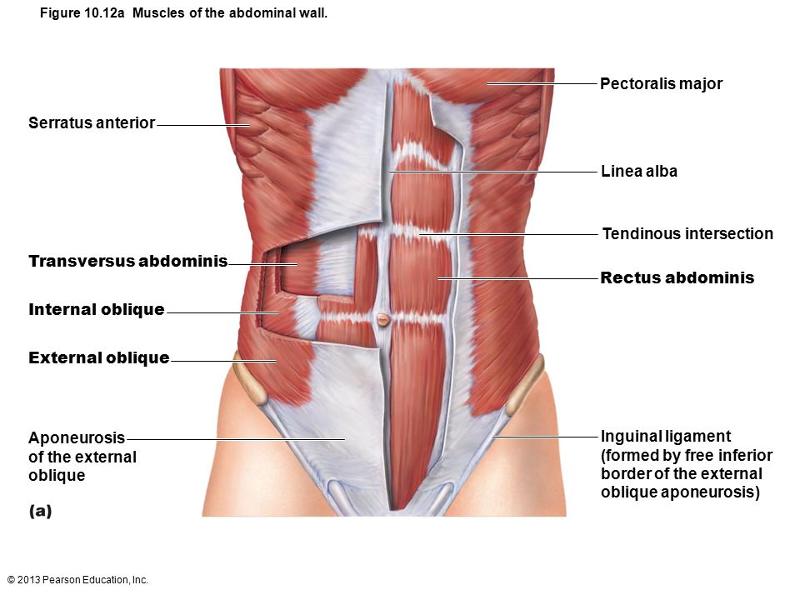
Identify the letter that indicates the Aponeurosis of external oblique.
a. Serratus anterior
b. linea alba
c. rectus abdominis
d. internal oblique
e. aponeurosis of external oblique
E
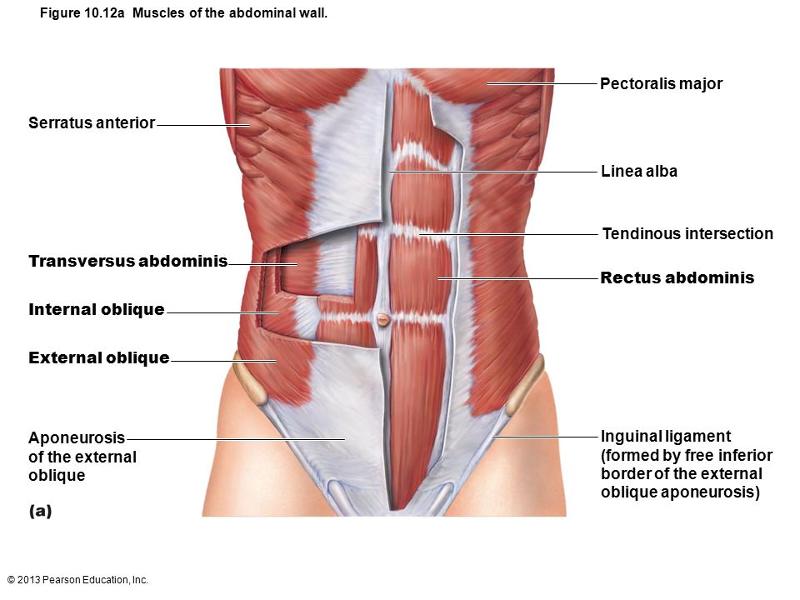
Identify the letter that indicates the Linea alba.
a. Serratus anterior
b. linea alba
c. rectus abdominis
d. internal oblique
e. aponeurosis of external oblique
B
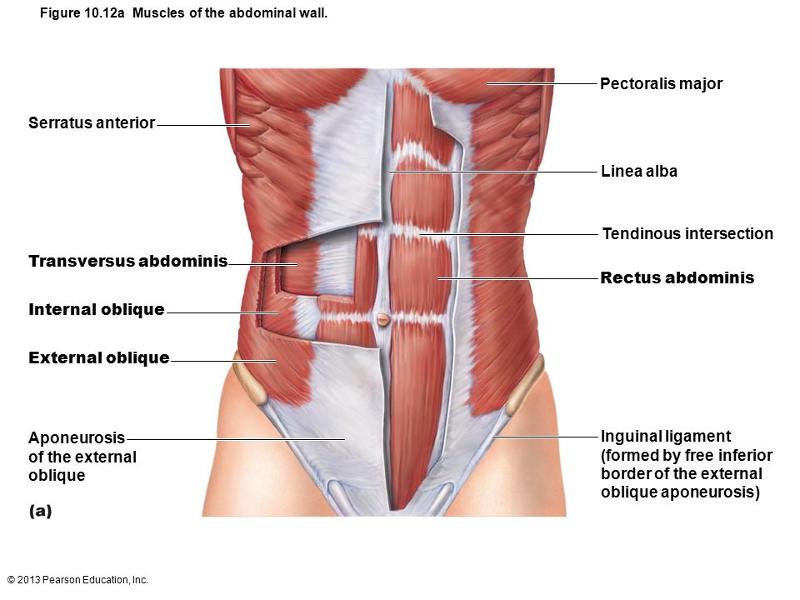
Identify the letter that indicates the Internal oblique
a. Serratus anterior
b. linea alba
c. rectus abdominis
d. internal oblique
e. aponeurosis of external oblique
D
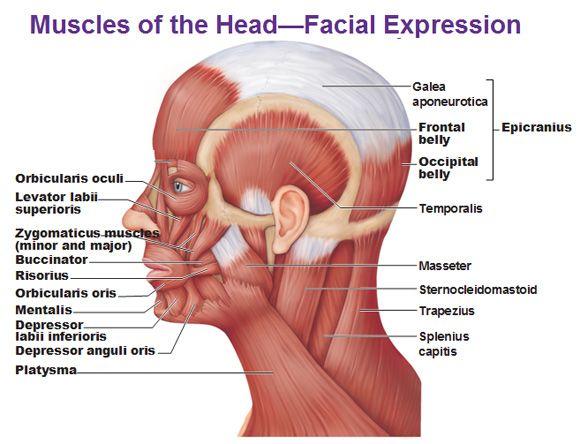
Identify the letter that indicates the Temporalis
a. epicranial aponeurosis
b. temporalis
c. zygomaticus minor and major
d. orbicularis oris
e. masseter
B
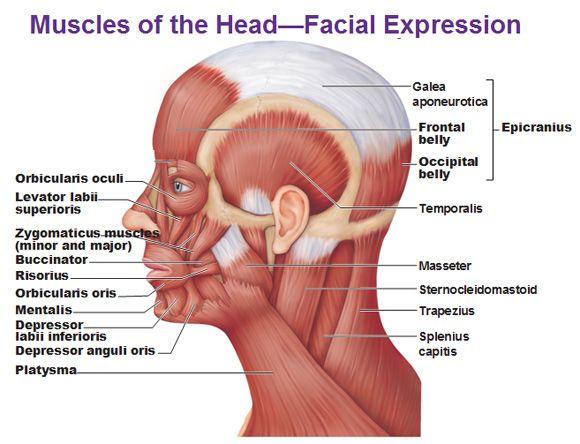
Identify the letter that indicates the Epicranial aponeurosis.
a. epicranial aponeurosis (galea aponeurotica)
b. temporalis
c. zygomaticus minor and major
d. orbicularis oris
e. masseter
A
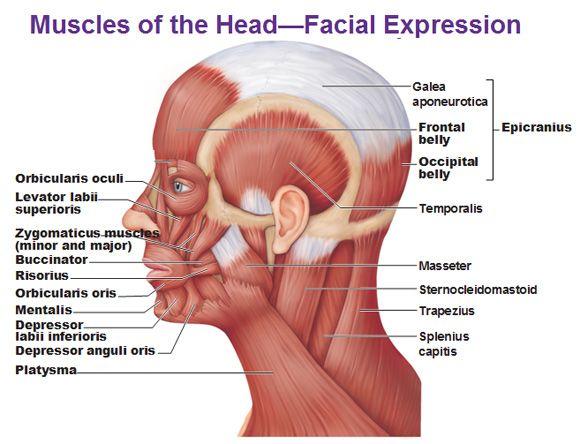
Identify the letter that indicates the Orbicularis oris
a. epicranial aponeurosis
b. temporalis
c. zygomaticus
minor and major
d. orbicularis oris
e. masseter
D
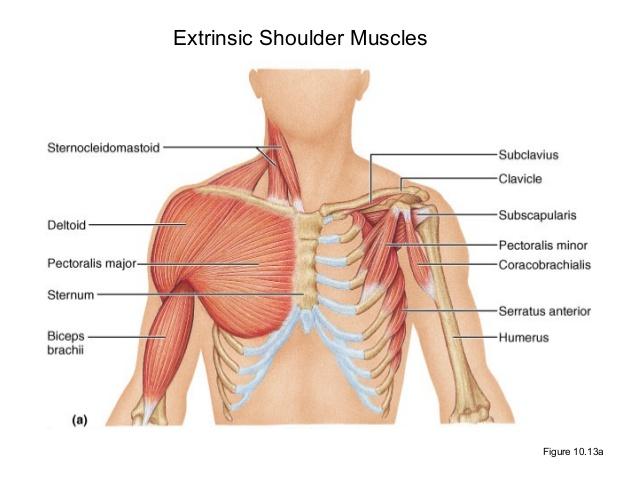
Identify the letter that indicates the Pectoralis major
a. sternocleidomastoid
b. deltoid
c. pectoralis major
d. pectoralis minor
e. serratus anterior
C
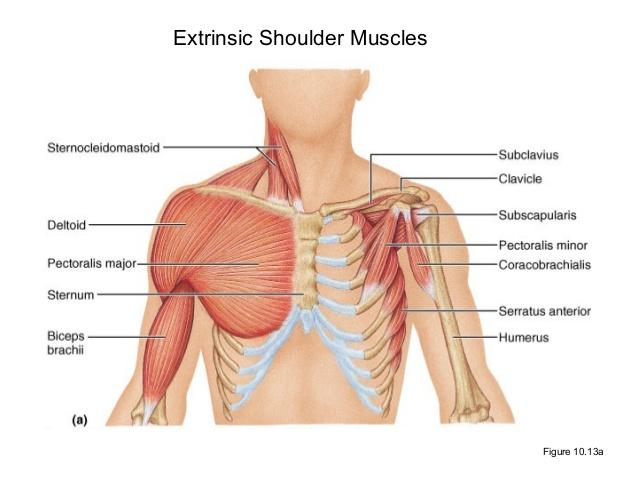
Identify the letter that indicates the Sternocleidomastoid.
a. sternocleidomastoid
b. deltoid
c. pectoralis major
d. pectoralis minor
e. serratus anterior
A
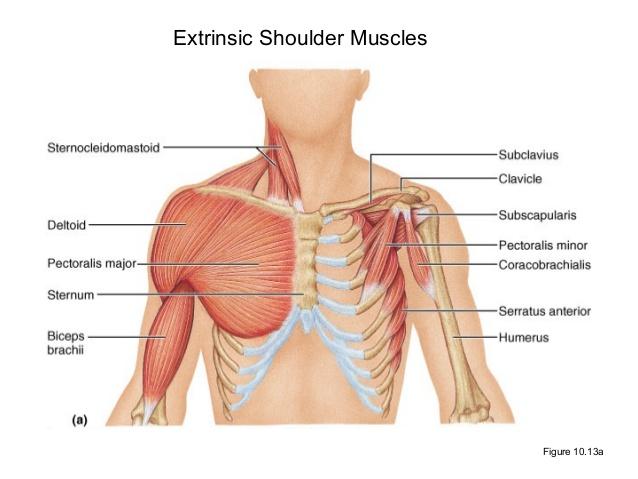
Identify the letter that indicates the Pectoralis minor.
a. sternocleidomastoid
b. deltoid
c. pectoralis major
d. pectoralis minor
e. serratus anterior
D
The major muscles used in throwing a punch are the
A) latissimus dorsi and deltoid.
B) teres major and brachialis.
C) brachioradialis and biceps brachii.
D) serratus anterior and triceps brachii.
D
A prime mover for flexion of the arm at the shoulder is the
A) pectoralis major.
B) deltoid.
C) latissimus dorsi.
D) coracobrachialis.
A
A muscle with fascicles that insert into only one side of the tendon is categorized as
A) parallel.
B) bipennate.
C) convergent.
D) unipennate.
E) circular.
D
An important function of the soleus muscle is to
A) extend the leg at the knee.
B) evert the foot.
C) invert the foot.
D) plantar flex the foot.
D
When the diaphragm contracts, it
A) opens a hole in its center through which air flows.
B) aids in expiration.
C) becomes flatter.
D) becomes more dome-shaped
C
The arrangement of muscle fascicles in a sphincter is
A) parallel.
B) bipennate.
C) convergent.
D) unipennate.
E) circular.
D
A depression on the posterior of the knee
A) femoral triangle
B) posterior triangle
C) medial bicipital furrow
D) popliteal fossa
E) supracristal line
D
A muscle that originates on the lateral surfaces of the superior eight ribs is the
A) rectus abdominis.
B) subclavius.
C) serratus anterior.
D) subscapularis
C
Marks the lateral margin of the rectus abdominis
A) femoral triangle
B) inguinal ligament
C) linea semilunaris
D) midclavicular line
E) anatomical snuffbox
C
The Sartorius muscle, a thin straplike muscle would have muscle fascicles arranged in
A) parallel.
B) bipennate.
C) convergent.
D) unipennate.
E) circular.
A
This vertical line passes 1 cm medial to the nipple.
A) femoral triangle
B) inguinal ligament
C) linea semilunaris
D) midclavicular line
E) anatomical snuffbox
D